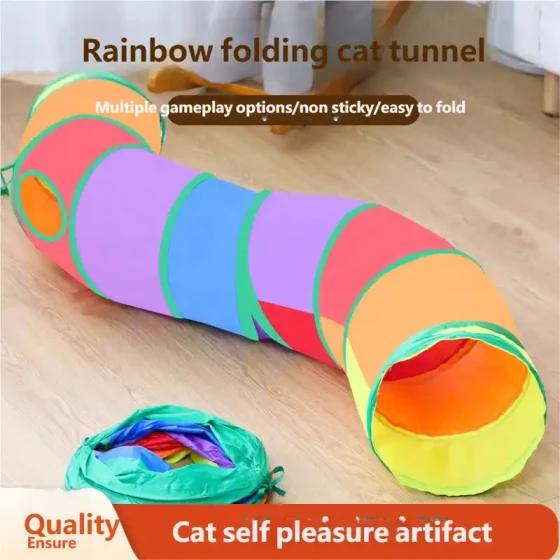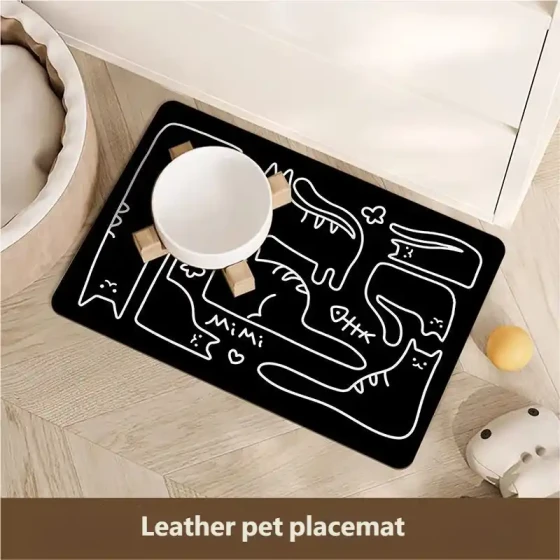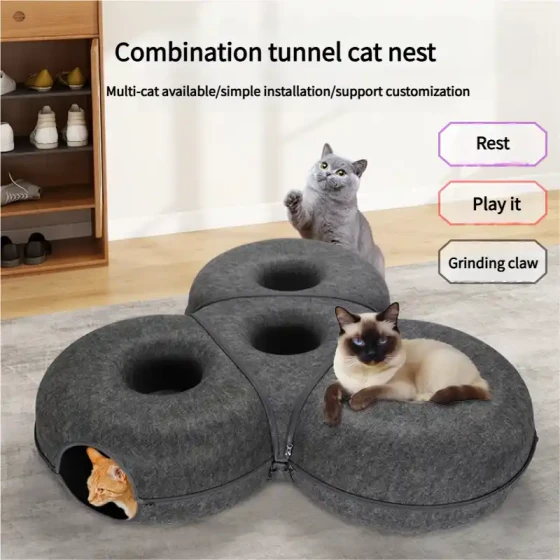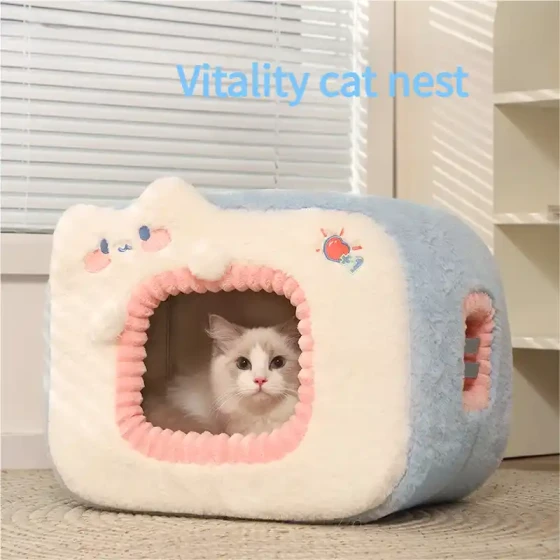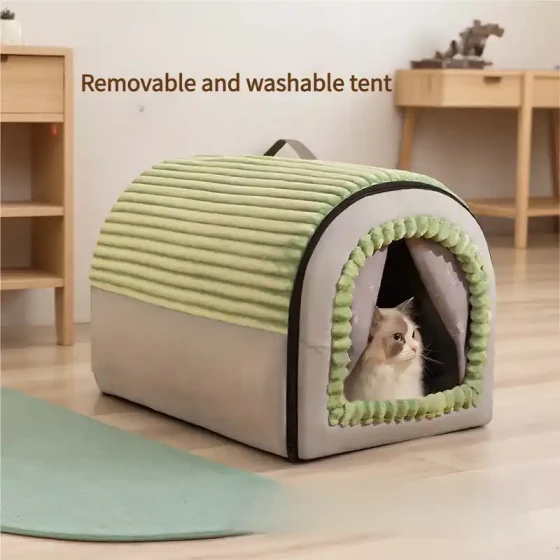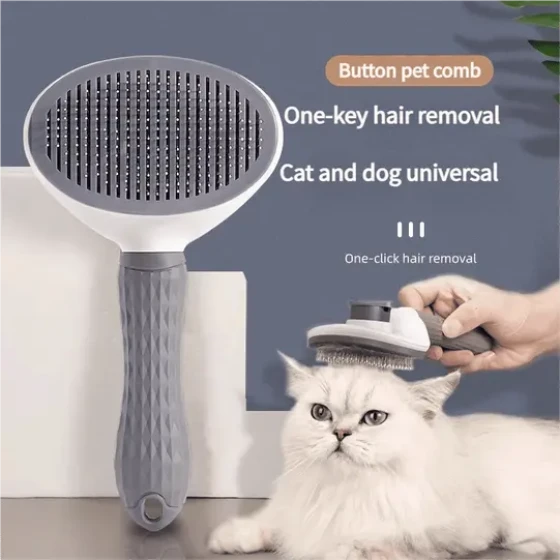Cat Vomits Brown Liquid but Is Energetic_Analysis of Reasons Why Cats Vomit Brown Liquid but Remain Energetic
When a cat vomits brown liquid but remains energetic, it often puzzles many "cat owners." Although occasional vomiting in cats is common, brown vomit may indicate a variety of situations; some require no major concern, while others demand caution. The most important thing is to consult a professional veterinarian promptly if vomiting is frequent or accompanied by other abnormal symptoms to ensure the cat's health.
Analysis of Reasons Why Cats Vomit Brown Vomit
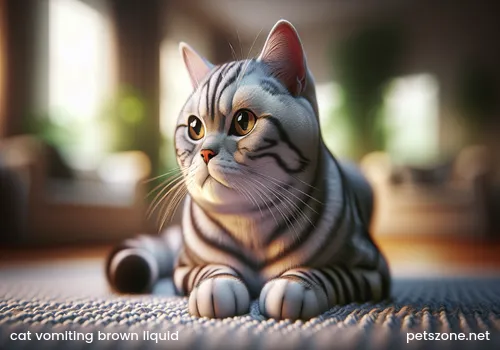
When cats vomit brown liquid, there may be multiple underlying reasons. This is similar to encountering "coffee grounds"-like substances in life, which could either be actual coffee grounds or other dark substances. Understanding these reasons helps us better assess the cat's health condition.
1. Digestive Contents and Food Residues
This is the most common and usually the mildest cause. If a cat has just eaten dark-colored cat food, canned food, or other foods containing dark pigments, brown vomit is not surprising. This is like how eating dragon fruit can change stool color. If after vomiting, the cat remains energetic, playful, and has a normal appetite, it is probably not a big issue.
Small Expansion: Some cats "eat like a whirlwind," eating too fast or too much, causing food not to be fully digested before being vomited out. In this case, the vomit may contain undigested food residues and look brown. Just like when we eat too quickly, our gastrointestinal tract can "react" uncomfortably.
2. Hairballs Mixed with a Small Amount of Digestive Secretions
Cats are "clean" animals and spend a lot of time licking their fur for grooming. Inevitably, they swallow some loose hair. When hair accumulates in the stomach forming hairballs, cats will vomit them out. If the hairball mixes with gastric juice, bile, or a small amount of digestive tract mucus, it can also appear brown. This situation is usually a physiological protective mechanism, and the cat's energy will quickly recover after vomiting.
3. Bile or Gastric Juice Reflux from Prolonged Fasting
If a cat has not eaten for a long time, the stomach is empty, and gastric acid and bile may reflux into the stomach lining, causing vomiting. Bile is usually yellow or yellow-green, but if mixed with minor bleeding of the digestive tract lining or oxidized, it can appear brown. Vomit in this case is usually liquid and may sometimes be foamy. Many cats vomiting "yellow water" or "clear mucus" fall into this category.
4. Mild Digestive Tract Irritation or Inflammation
If a cat's digestive tract, including the esophagus, stomach, and intestines, is mildly irritated or inflamed, it may also result in brown vomit. For example:
- Mild Gastritis: May be caused by improper diet (eating unclean food), stress response, or side effects of certain medications. When the gastric mucosa is damaged, minor bleeding may occur, and blood turns brown after mixing with stomach acid, resembling "coffee grounds."
- Food Intolerance or Allergy: Some food components may cause gastrointestinal discomfort, leading to digestive tract inflammation and vomiting.
- Parasite Infection: Intestinal parasites may irritate the digestive tract causing inflammation and vomiting.
5. Ingestion of Foreign Objects or Toxic Substances
Cats are naturally curious and sometimes accidentally ingest things they shouldn’t, such as small toys, threads, plants, or even household cleaning agents or medications. If the foreign objects have color or irritate the digestive tract causing minor bleeding, they may cause brown vomit. Some poisonous substances can also cause digestive tract bleeding, leading to brown vomit. Although rare, this can be serious and requires immediate attention.
6. Other Potential Diseases (Need Caution)
Even with good mental status, brown vomit may be an early sign of certain underlying diseases, especially if vomiting recurs:
- Digestive Tract Ulcers: Bleeding from stomach or intestinal ulcers where blood turns brown or coffee grounds-like after digestion.
- Liver or Kidney Disease: Severe liver or kidney conditions may cause toxin accumulation in the body, leading to vomiting with abnormal color.
- Pancreatitis: Inflammation of the pancreas can also cause vomiting and affect digestion.
- Certain Tumors: Digestive tract tumors may cause hemorrhagic vomiting.
Though these conditions are relatively serious, they usually present with other obvious symptoms such as lethargy, loss of appetite, diarrhea, and weight loss.
When Should You Take Your Cat to the Vet?
When seeing a cat vomit brown liquid, first stay calm and observe the cat's overall condition. Like traditional Chinese medicine’s “inspection, listening, questioning, and palpation,” careful observation is crucial for cats too.
Diagnosis and Treatment
When symptoms warrant medical attention, the veterinarian will conduct a series of examinations based on the cat's history, clinical symptoms, and vomit characteristics to confirm the diagnosis. These tests may include:
- Physical Examination: Assess overall health including temperature, heart rate, breathing, abdominal palpation, etc.
- Blood Tests: Check for inflammation, anemia, liver and kidney function abnormalities.
- Fecal Examination: To rule out parasitic infections.
- Imaging Examinations: Such as X-rays, ultrasound, to check for foreign bodies, tumors, or inflammation in the digestive tract.
- Endoscopy: Direct observation of the digestive tract interior and biopsy sampling if necessary.
After diagnosis, the vet will develop a treatment plan based on the cause, which may include medications (such as gastrointestinal protectants, antibiotics, dewormers), dietary adjustments, or even surgery (to remove foreign objects or tumors).
How to Prevent Cat Vomiting?
“Prevention is better than cure,” and this applies to cat vomiting as well. In daily life, some small details can help reduce the risk.
1. Scientific Feeding and Regular Meals
- Small and Frequent Meals: Avoid prolonged fasting causing excess gastric acid secretion or eating too quickly leading to indigestion. Divide daily food into 3-4 meals or use slow-feeder bowls to encourage slow eating.
- Choose Appropriate Cat Food: Select easily digestible, nutritionally balanced quality cat food and avoid sudden changes. If switching is necessary, use a "7-day switching method" by gradually increasing the new food ratio over 7-10 days to allow the cat’s gastrointestinal tract to adapt.
- Provide Adequate Clean Drinking Water: Ensure the cat always has access to fresh, clean water to prevent dehydration.
2. Regular Fur Brushing to Prevent Hairballs
Especially for long-haired cats, daily grooming can reduce the amount of hair swallowed. Regularly brush your cat (daily or 2-3 times a week) with a professional comb to effectively reduce ingested hair. If necessary, consider feeding hairball remedy pastes, cat grass, or fiber-rich foods (like pumpkin puree or steamed sweet potato chunks) to help expel hairballs.
3. Prevent Cats from Ingesting Foreign Objects
- Store Dangerous Items Safely: Keep small household items, threads, plastic bags, cleaning agents, medications, and toxic plants (like lilies and daffodils) out of cats' reach.
- Regularly Inspect Toys: Check if cat toys are broken to prevent swallowing fragments.
- Pay Attention to Food Safety: Avoid feeding human foods casually, especially chocolate, onions, grapes, and other foods toxic to cats.
4. Regular Deworming and Health Checks
Follow veterinary advice to regularly deworm cats internally and externally. Even if the cat looks healthy, an annual full health check helps early detection and treatment of potential health issues.
Frequently Asked Questions
Q1: If my cat occasionally vomits brown liquid but quickly recovers, do I need to take it to the vet immediately?
A1: If a cat only occasionally vomits brown liquid and afterward shows normal energy, appetite, and activity without other symptoms, home observation is usually fine. This might be due to eating dark food, indigestion, or hairballs. However, if the vomit looks like "coffee grounds," even if the cat seems fine, a vet visit is recommended promptly.
Q2: How can I tell if my cat’s brown vomit is due to digestive bleeding or food residue?
A2: If the vomit is dark brown, sticky, and has "coffee grounds"-like granules, it likely indicates digestive bleeding since blood turns this color after contact with stomach acid. If it's from dark cat food or canned food, the vomit may contain visible food shapes or particles and lacks the sticky coffee grounds texture. When in doubt, consult a veterinarian.
Q3: Should I feed my cat immediately after it vomits brown liquid?
A3: It is not recommended to feed immediately. Generally, fasting for 12-24 hours after vomiting is advised to allow the gastrointestinal tract to rest. During this time, offer small amounts of water frequently to prevent dehydration. If no vomiting occurs after 24 hours, try feeding small amounts of bland, easily digestible food like boiled chicken breast (without seasoning) or prescription gastrointestinal cat food. If vomiting recurs, seek veterinary care immediately.
Q4: What is a normal frequency for cats to vomit hairballs?
A4: Hairball vomiting frequency varies by cat, with long-haired cats usually vomiting more often than short-haired ones. If a cat vomits hairballs more than twice a month or each episode is difficult, painful, or accompanied by lethargy and decreased appetite, it warrants attention. Adjust hairball management or investigate for other health problems may be necessary.
Conclusion
Cat vomiting, especially brown liquid vomit, can worry cat owners. But with careful observation combined with attention to the cat’s overall condition and other symptoms, an initial assessment can be made. Remember, whether minor or serious, promptly seeking professional veterinary help shows responsibility for our "fur babies." After all, a cat’s health is our greatest wish.
References
- Pet Drugs Online. Cat Vomit Colour Chart.
- Best Friends Animal Society. Cat Vomiting: Types, Causes, and Treatments.
- Wag!. Vomiting With Bile in Cats - Symptoms, Causes, Diagnosis, Treatment, Recovery, Management, Cost.
- PetMD. Why Is My Cat Throwing Up Yellow Liquid?
- PetMD. Bilious Vomiting Syndrome (BVS) in Cats.
- My Cat is Vomiting Brown Liquid: Should I See an Urgent Vet?
- Wag!. Why Is My Cat Throwing Up Blood?
- Cronulla Vet Clinic. Help! My Cat Is Vomiting!
- Animal Care Center of Castle Pines. Why Is My Cat Throwing Up?
- Sheba® Singapore. Learn Why Cats Vomit & It's Solution.
- Quora. What might be some causes my cat is throwing up a brown liquid?
- Hairball Family. Summary of Causes and Types of Cat Vomiting! How to Prevent Cat Vomiting Through Daily Care?
- United News Network. Don’t Treat Cat Vomiting as a Trivial Matter! Emergency Levels of 6 Vomit Colors Cat Owners Must Know.
- Reed Cat Litter. 6 Common Causes of Cat Vomiting and Emergency Remedies Suggested by Veterinarians.
- Purina. Types of Cat Vomit & What it Means.
- Pawlicy Advisor. Why Is My Cat Throwing Up And What Can I Do To Help?
- Everypaw Pet Insurance. Vomiting in Cats: When to Worry.
- Taiwan United Animal Park Association. What to Do When Cats Vomit? Common 10 Causes and How to Handle Them.
- MONSPET. What to Do When Cats Vomit? Step-by-Step Guide to Judging Cat Condition by Vomit Color.
- Halo. What to Do When Cats Vomit? Five Common Causes and 3-Minute Full Analysis of Solutions.
- HeroMama. Overview of Cat Vomit Colors! Pink Vomit Indicates Bleeding Location?
- Today's Headlines. Don’t Panic if Your Cat Vomits, Understand the Cause First, Hospital Not Always Needed.
- Sina. Don’t Panic if Your Cat Vomits, Understand the Cause First, Hospital Not Always Needed.
- Royal Canin. Cat Vomiting Guide! Vets Teach You How to Identify Causes and Manage.
- OneDegree HK. Should You Take Your Cat to the Vet Immediately for Vomiting? Explanation of Coffee Color, White Foam, Yellow Water Meanings.
- Taiwan United Animal Park Association. What to Do When Cats Vomit? Common 10 Causes and How to Handle Them.
- Taipei Pet Supplies Expo - Shanglian International Exhibition Co., Ltd. What to Do When Cats Vomit? Tell You 7 Top Causes and Daily Remedies at Once!
- Expert Teach You to Judge Cat Vomiting Causes by Vomit in 3 Minutes, and Detailed Relief Methods.
- Moreson Pet Health Foods | Precise Nutritional Supplements for Dogs and Cats. How to Handle Cats Vomiting Yellow Water.
- Today's Headlines. Cat Vomits Brown Liquid.
- Tencent News. Cat Vomits Continuously and Refuses Food? Possibly Gastritis.
- AccompanyHeart Pets. 【Dr. Meow】【AccompanyHeart Elementary】My Cat Vomited? Understand 3 Vomit Colors: What Does White Foamy Vomit Mean? This Color Means Vet Visit Needed!
- Rice Flower Dog & Cat Stories. Cats Vomit Regularly?! Do Not Ignore Cat Vomiting.
- PetMD. Cat Vomiting: Causes, Types, and What to Do.
